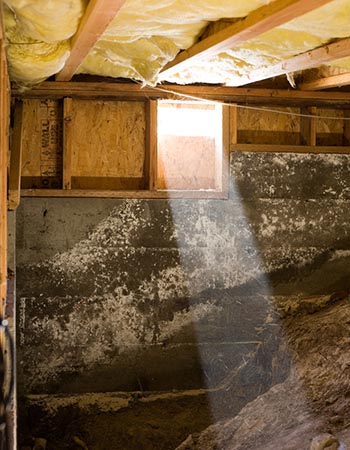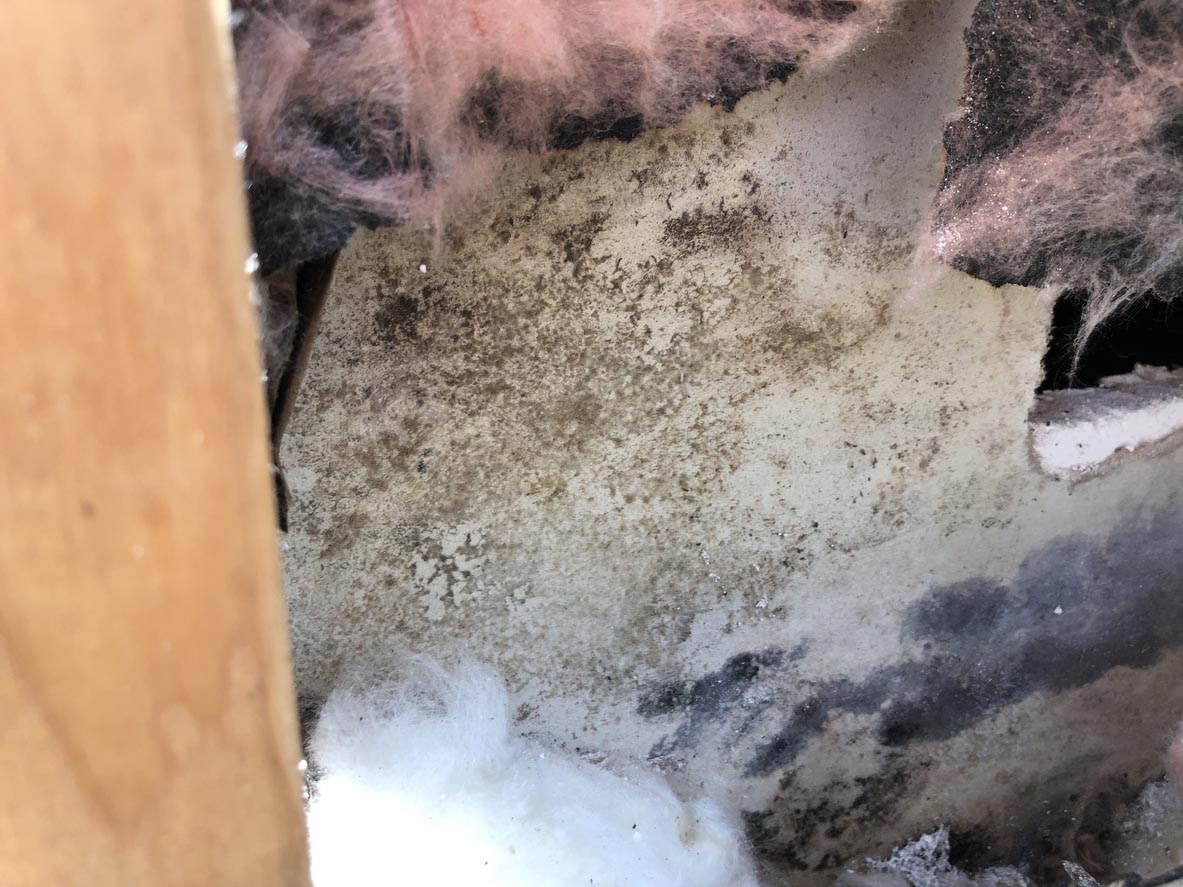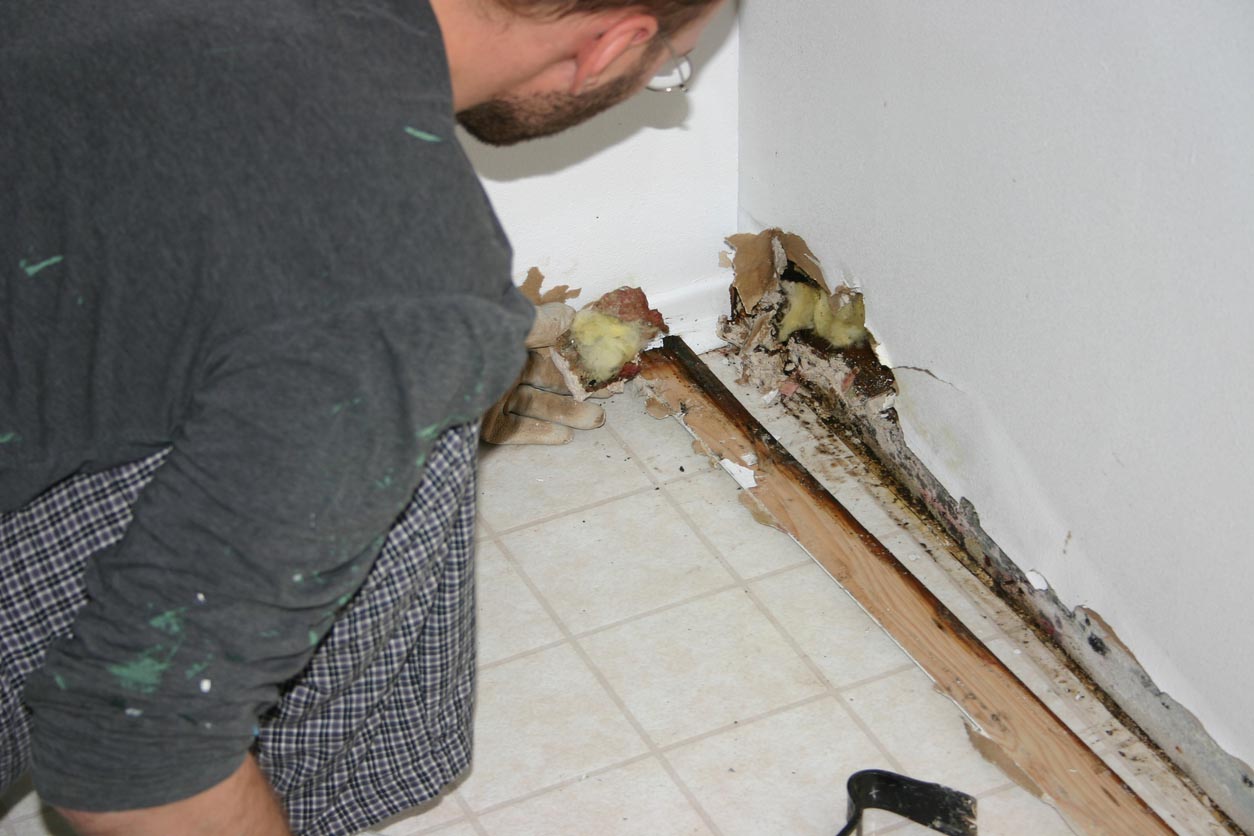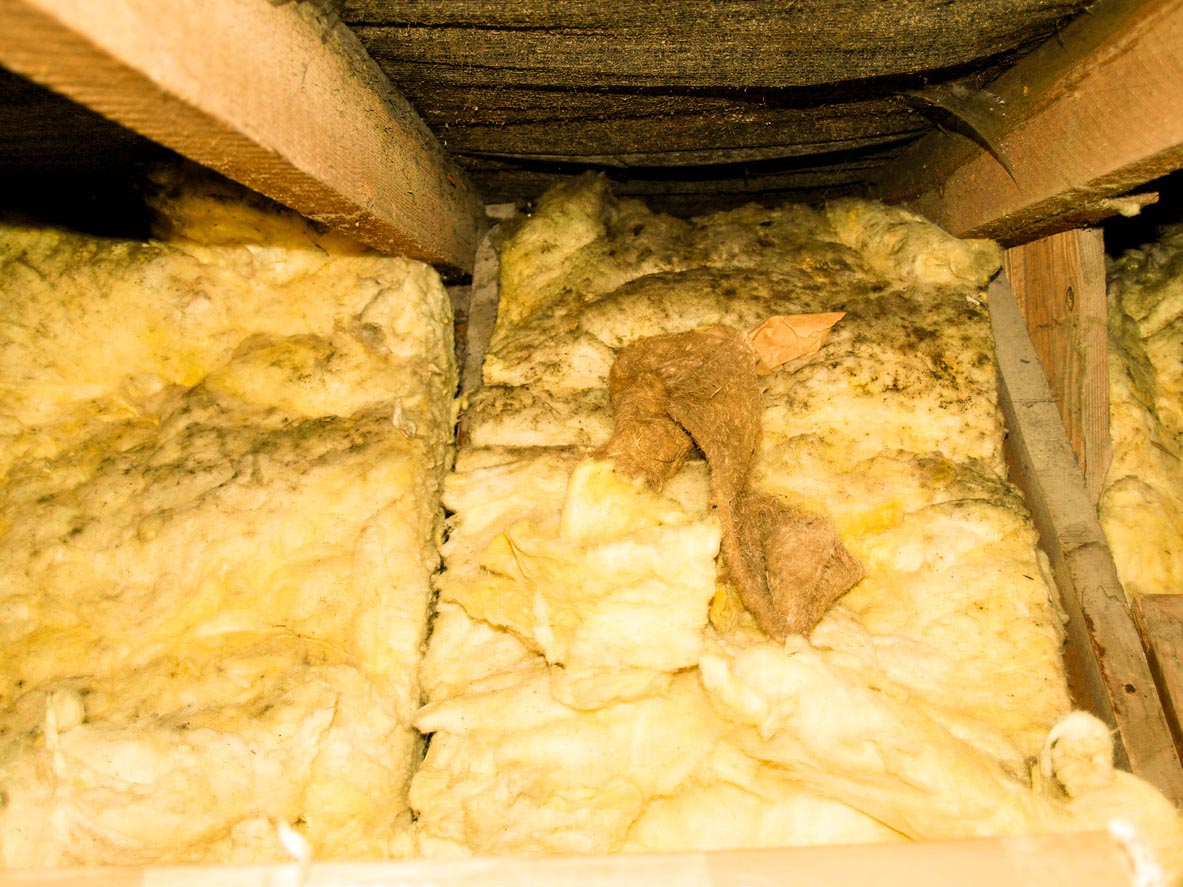We may earn revenue from the products available on this page and participate in affiliate programs. Learn More ›
Q: I’ve recently noticed a musty smell throughout my home. I suspect it’s mold, but I haven’t seen any visual signs of mold growth. Is it possible to have mold on my insulation? How do I know if it’s mold, and how do I get rid of it?
A: A musty scent is often the first clue that mold is growing somewhere inside a home. But before peeking behind walls or inside insulation, it’s important to note that exposure to mold can be a health risk, especially for those who have respiratory problems. Homeowners who suspect they have this issue will want to reach out to one of the best mold removal companies, such as ServiceMaster Restore or ServPro, to perform a mold inspection. These professionals can confirm the full extent of the problem and will know what it will require to get rid of the mold for good. But first, it’s worth diving into the details of identifying and getting rid of mold in order to know what to expect.

Moisture is a primary factor for mold growth. If insulation becomes wet or damp due to leaks, high humidity, or flooding, it creates an environment that breeds mold development. In fact, mold growth can appear 24 to 48 hours after moisture infiltrates insulation. Depending on the type of climate in the area where the home is located, mold can grow when the relative humidity level is at or above 70 percent for an extended period of time.
Leaky roofs, plumbing issues, or improper sealing in the home can contribute to moisture accumulation and, subsequently, mold in the home’s insulation. The good news is that a mold remediation company can help with identifying mold types and helping homeowners understand what causes mold in a house.
Since insulation is often located out of sight, the first indication of mold growth on a home’s insulation may be a musty odor.
Nothing gives away the presence of mold in the house quite like the distinct smell of mold. Its scent is usually described as musty, but it can also smell earthy since it’s technically organic matter growing from excess moisture. One way to identify black mold is by its pungent, rotting-leaf smell. If mold is affecting a home’s insulation, it may not be visible without opening up drywall or peering into crawl spaces. If homeowners detect a musty or moldy smell, it’s crucial to identify and address the source of mold growth to prevent potential health issues and further damage to the affected area.
Visible signs of mold may depend on the insulation’s location in the home. In attics, where fiberglass and blown-in insulation are common, there may be a layer of dark spores on the insulation’s surface.
Attics are prime locations for mold growth because they are prone to roof leaks and insufficient ventilation. Additionally, mold growth in attics can go undetected for extended periods if residents don’t visit the space regularly. Most attics are insulated with fiberglass batting or blown-in insulation. As dust, moisture, and spores settle on these surfaces, they can become breeding grounds for mold. If this is the case, there may be changes in color, and the insulation may appear darker than unaffected areas. Mold on fiberglass insulation often looks like dark spots or patches that can vary in color, from shades of green to black or brown. Even blown-in insulation is susceptible to mold if it gets wet. It’s a good idea to regularly monitor for leaks and humidity issues in the attic to get ahead of this issue.
Drywall that is harboring moldy insulation may crack or develop stains and discoloration.
Insulation within a home’s drywall is also vulnerable to mold growth, either due to water damage or excess humidity. Growth may not be visible immediately as it forms on batting inside the walls. But as it progresses, spores in a variety of colors from purple to green, orange, or white may start to appear on the wall’s surface. Homeowners may also notice that mold on walls causes paint or wallpaper to bubble or flake off. Mold can even weaken the integrity of a home’s drywall, eventually leading to cracks due to the deterioration of materials. If these signs are accompanied by mold’s signature musty, dank scent, there’s a good chance that there is moldy insulation inside the wall cavity. Unfortunately, even using the best mold removers to clean the wall will not eliminate this problem permanently if it originated in the insulation. Instead, the moldy insulation will need to be removed and replaced. After that, it may be necessary to have a drywall contractor repair the area that was affected.

Moldy batting in basements and crawl spaces may have green or black splotches that spread to surrounding wooden joists.
Getting rid of mold on crawl space insulation may seem like a low priority since most homeowners seldom visit this part of the home. However, it’s important to know that once mold begins to grow, it can spread quickly throughout not only the area it’s infecting but also surrounding materials. This is especially true if the mold is growing in tight, dark, often damp areas such as basements or crawl spaces. Eventually, advanced mold growth can cause significant structural issues that extend to joists and floorboards. Mold in crawl spaces can sometimes be identified by looking for green or black splotches that cover the surface of insulation as well as surrounding walls. However, using one of the best mold test kits or scheduling an inspection by a mold removal company is the safest way to determine if there is mold and where it may have spread in such tight quarters.
Mold on insulation needs to be dealt with quickly as it can pose a serious health risk to the home’s residents.
Mold on insulation may seem like less of a risk since those inside the home don’t come in direct contact with it. Unfortunately, the presence of mold alone is enough to affect the air quality in the space. This is especially concerning if anyone who lives in the home has upper respiratory issues or conditions that make them more sensitive to mold exposure. According to the U.S. Environmental Protection Agency (EPA), long-term exposure to mold growth inside a home can cause the following symptoms:
- Sneezing
- Runny nose
- Skin rash
- Asthma attacks
The sooner any mold, especially black mold on insulation is addressed, the less likely it is that anyone will suffer ill effects from it. This is one issue that is best not put off since mold can often produce mycotoxins that are released into the air and cause harmful side effects or allergic reactions.
Mold growth can also greatly reduce the efficacy of the insulation, potentially leading to increased energy costs.
Although replacing insulation may come at a significant cost, homeowners may be surprised at how much extra they’ve been paying for heating and cooling if their insulation has been inefficient. Moldy or wet insulation can alter the thermal performance of fiberglass and cellulose and reduce insulation’s ability to resist heat flow. This can cause the home’s HVAC unit to work overtime to cool or heat the home, leading to higher monthly payments on electricity bills. Having old, moldy insulation replaced has the potential to lower monthly bills and result in a more efficient system for heating and cooling.

To ensure that the mold is safely eliminated, it’s a good idea to have a mold remediation company remove the insulation and clean any other affected areas.
Even small amounts of mold in insulation can pose a problem if not addressed right away. The minute a homeowner suspects or encounters mold signs in the house, it’s best to consult a mold specialist who can provide a full picture of the issue and what it will take to remove the moldy insulation and make any repairs. The cost of a mold inspection can run anywhere from $299 to $1,014 depending on how extensive the mold growth is and where it’s located. Once an inspection is complete, homeowners can expect a quote for the cost of mold remediation to range from about $1,125 to $3,439, depending on factors such as the size of the problem and where the remediation will take place. Mold remediation specialists will also be able to identify the initial cause of mold growth and make recommendations for future mold prevention measures.
An insulation professional can put in new, mold-resistant insulation to prevent future mold issues.
Even if having all or some of a home’s insulation replaced isn’t the most exciting prospect, a professional will be able to put in new insulation that can resist mold and prevent the issue from happening again. Today’s materials, which often consist of closed-cell foam, mineral wool, and fiberglass, all have the ability to resist moisture absorption, which makes it almost impossible for mold to grow. Plus, once it’s in place, the new insulation is likely to last at least 10 years, adding value to the home and resulting in many years of increased energy efficiency.
FAQs
Whether homeowners have suspicions that mold is growing in their insulation or know for a fact that they have mold in attic insulation, they are bound to have a few questions. Here are some answers to common questions about who to call, what to expect, and how to get rid of the musty stuff.
Q. What kills mold on insulation?
It’s typically only possible to kill mold on insulation if it is closed-cell insulation. In this case, it’s best to use an EPA-registered fungicide. For those wondering what kills mold, borax or bleach are some of the best EPA-approved options. Homeowners can apply a solution of these substances to the insulation and then let it completely dry before replacing any other insulation that can’t be salvaged.
Q. What is the life expectancy of insulation?
Depending on when it was installed and what it is made of, insulation has a life expectancy of about 10 years. Any insulation older than 10 years likely won’t be as efficient as newer materials that can withstand severe cold or hot temperatures. If the home is older and the insulation hasn’t been replaced since it was built, it may be time to put new insulation in.
Q. Can you spray bleach on insulation?
No, you cannot spray bleach on insulation unless it’s closed-cell insulation. The material used for other types of insulation is porous and makes the bleach an ineffective treatment option. If moldy insulation is rampant, it may be time to consider replacement as opposed to remediation or treatment.
Q. How can you tell if insulation is dirty or moldy?
The first way to tell if insulation is dirty or moldy is to inspect it visually. Since insulation is usually white, any dirty or moldy insulation will be discolored, often yellow, orange, brown, or pink, depending on what it’s come in contact with. If there is discoloration, homeowners can look up how to test for mold themselves. However, it’s best to leave the insulation alone and contact one of the best insulation contractors (such as Dr. Energy Saver) to take a look and come up with a treatment or replacement plan.


